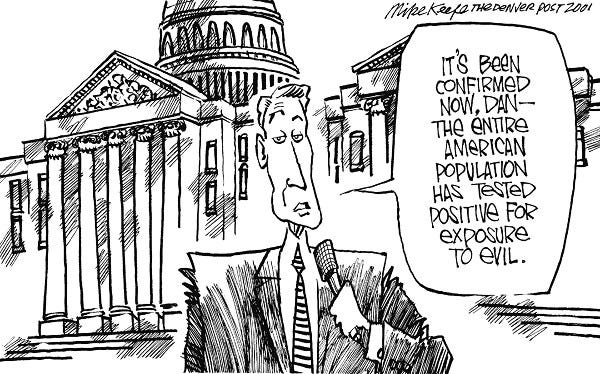Once you understand that Bitcoin is hard money, it’s hard to unsee it. Bitcoin’s superiority in scarcity over every other asset is obvious in retrospect and it’s difficult to return to the previous view of Bitcoin as something other than hard money. This naturally leads to speculating over how exactly will Bitcoin become the global reserve currency. Thier’s Law states that good money drives out bad and if we expect that to be the case, exactly how will this come about?
In my previous analysis of the situation, I had always thought that this would come about much in the same way it’s come about in my experience, which is to say, directly. I learned about Bitcoin and bought Bitcoin with fiat money. This is what I expected to happen to a whole lot more people, gradually then suddenly. Indeed, that seemed to be the pattern that we saw up through 2019.
2020 changed everything, not just in terms of a world-wide pandemic, but in terms of how people thought about Bitcoin. Because of the rampant fiat monetary expansion, overnight, nearly everyone started recognizing fiat money as a terrible place to store their wealth. Many, as a result, have put money in Bitcoin, which is to be expected according to Thier’s Law, but more importantly, other assets are becoming Bitcoinized.
This was pioneered in the public markets by Michael Saylor, who in 2020 announced that his company MicroStrategy (MSTR) was putting Bitcoin on its balance sheet. His move was defensive, as a way to protect his company’s wealth against the monetary expansion, against cash which to him was a “melting ice cube.” The side effect of this defensive move was that MicroStrategy became a Bitcoinized asset.
The Bitcoinization of the stock should not be underestimated. A stock that had more or less held steady for the past 3 years before 2020 started correlating with Bitcoin. Bitcoin has gone up significantly due to the supply shock of the 2020 halvening and that in turn caused its price to go up significantly, driving this bull market and driving MSTR up as well.
Seeing this correlation, Saylor took further advantage of the situation and offered a convertible note to the bond market. The $450M bond issue was oversubscribed by $150M as bond investors apparently, really wanted some Bitcoin exposure. Michael Saylor had created another Bitcoinized asset, but this time in the bond market.
This past week, MicroStrategy has raised another $1.05B in a convertible note. The $600M issue was oversubscribed this time by $405M, which goes to show the market’s hunger for Bitcoinized assets. What’s going on here?
It turns out that there are pools of capital that want Bitcoin exposure but can’t directly buy Bitcoin. This may be due to regulations, corporate charters, rules around funds or coordination amongst board members. Whatever the case, buying Bitcoin directly like retail is not an option and these large pools of capital are forced to wait for Bitcoinized assets instead. In other words, Bitcoin exposure by way of direct Bitcoin buying simply isn’t available to most fiat money in existence.
This leads to an interesting dynamic. Instead of capital flowing directly to Bitcoin, we have the situation where capital has to flow indirectly and that means that all the in-between vehicles, whether they be stocks or bonds or companies or whatever, will in some sense be saved from fiat collapse. Bitcoinized assets, in other words, can survive the collapse of the proverbial house of cards.
In a sense, this is the ideal outcome for a non-violent revolution of the economy, where only the most zombie-like companies and governments will die out. Anything productive has a chance to survive through Bitcoinization. The good news for retail is that they can and will continue to invest directly and that will always be more efficient than indirect methods which larger pools of capital will have to resort to. Retail will have the advantage because it can ignore the rules and regulations surrounding the truly big money. In the meantime, we can expect more Bitcoinized assets including Coinbase, Tesla, Riot and others to slowly Bitcoinize the economy.
Bitcoin
Taproot activation meeting about Lock-in on Timeout (LOT) has some reports here. There is controversy in what the protocol will default to should not enough miners signal readiness. There are some, such as Greg Maxwell think it should be set to false, meaning that activation would by default be false on the Bitcoin Core client should a year pass and miners not signal. Others, such as Luke-jr think it should be set to true and guarantee activation in some form. As it should be, it’ll be up to the individual node operators to run what they think best.
Jameson Lopp has an analysis of Bitcoin block times. As we all know, the average block time is 10 minutes, but this can vary quite a bit as some take a few seconds and others take way longer. He analyzed the expected distribution of block times and found some very interesting results, including how this varied during the CPU, GPU and ASIC eras. The one thing that I gathered from his analysis is that clock-drift is fairly common and has resulted in a lot of blocks that were “found” before the previous block.
Chris Belcher has a CoinSwap implementation. This is a proof-of-concept of people spending their coins to each other as a way to anonymize their coins. The main innovation being used is 2-party ECDSA, which is a way to do something like a 2-of-2 multisig, but making it look like a single key signature on-chain. As a result, there is a lot better privacy since the overall anonymity set is singlesig addresses, which are much more plentiful than multisig addresses. I would love to see a wallet implement this for real as part of their anonymizing.
Lightning
The latest release of lnd has Lightning Pool. This is a marketplace for inbound liquidity where you can get channels opened to you for a price. Since channels are trustless, this is the purest rate of interest on Bitcoin you are likely to get. I would love to see how this develops as it’ll tell us something about how people price not having access to their coins, though it’s not quite the purest it could be as the key has to be online and there’s some level of security risk that comes with that.
FastBitcoins is encouraging Lightning withdrawals. They are going to give users 50% of the on-chain fees if the users instead withdraw on Lightning. This makes all the sense in the world and should be a nice win-win. Users get more money and FastBitcoins should eventually make their money back in the on-chain fees they save. I’m pretty surprised that more exchanges haven’t done something similar, but here’s already the bar that they’ll have to meet.
Economics, Engineering, Etc.
Allen Farrington argues that Bitcoin is Venice. Venice, as he points out in the essay, was the city of merchants, and really of free enterprise. The rest of the world was a bastion of feudalism, which, as Allen points out, is very much making a comeback in the form of all manner of fiat money control. Bitcoin is the oasis of freedom in the desert of this oppression, much as Venice was back in the days of feudal monarchs. Great read and no less a personage as Jordan Petersen is retweeting it.
OKCoin has delisted BCH and BSV. This is quite the turnaround from 18 months ago when they ran a ecosystem funding campaign more or less putting BTC BCH and BSV on the same footing. As they said in their new post, they’re willing to revisit their decision to delist these coins if they’ll rebrand to something that’s clearly not Bitcoin. I’m extremely happy to see that they’ve come around to help protect their customers from unnecessary confusion.
Arthur Hayes has another irreverent article on the current system. The gist of the article is about how the current stock market system is rigged and how the rules heavily favor institutions instead of retail. We already know this, but he goes into detail the ways in which retail gets screwed, despite the information asymmetry disappearing with the internet. He argues that Bitcoin is an unrigged game and allows walking away from the rigged game. Worth reading in full, just for his style.
A Canadian Bitcoin ETF has had a pretty good debut. $165M of volume is a good start, but I expect this to get really heated over the next 12 months. This is on the heels of the news that Coinbase has a pre-direct listing valuation of $100B. I expect this stock to track Bitcoin closely, though it’s currently unknown how much BTC they hold on their balance sheet.
Another week, another coin gets attacked. This time, it was 7 months of blocks that got overtaken with empty blocks on XVG. When I say altcoins are vulnerable, I mean stuff like this.
Podcasts
I released two podcasts this week, the first with Doug Polk about his challenge. We talked about his duel with Daniel Negreanu, what he learned and what he’s going to do next.
The second was with Plan B about traditional finance. We talked about negative interest rates, the Bitcoin futures cash and carry trade and how central banks reducing risk has also eliminated the reward.
Lastly, I talked to Cross Politic about the new book:
Fiat delenda est.













I love the idea of reading the article and commenting on it on Clubhouse. Thanks for the good content!